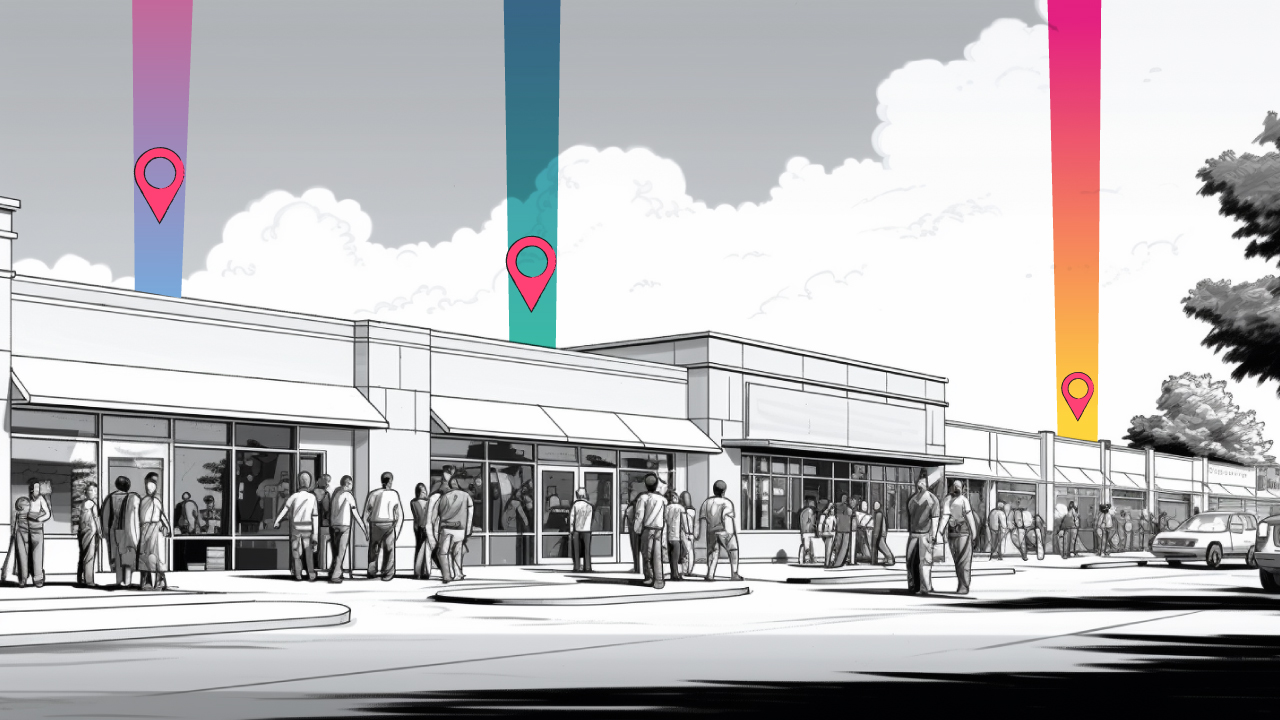Retail is a competitive and constantly evolving sector of commercial real estate (CRE) because it responds to changing consumer behaviors and technological advancements.
For example, e-commerce has posed both challenges and opportunities to retail owners to reinvent their retail models and reimagine the physical spaces their stores inhabit.
In such a context, knowing the true market value of a retail property becomes ever more important.
Accurate commercial property valuations form the backbone of strategic decision making in CRE.
What’s more, in today’s world, traditional property valuation methods are being complemented by advanced technologies like artificial intelligence, machine learning algorithms, and geographic information systems (GIS) analyze data, improving the accuracy of valuations.
In this guide, we delve into eight proven methods you can use to perform a valuation on your retail property. Let’s dig in.
What is a Commercial Property Valuation?
A property valuation is simply an expert estimate of a property’s fair market value.
A valuation may take the form of an official appraisal which is a formal assessment of a property’s value accepted by mortgage lenders.
A less formal broker price opinion (BPO) is a simpler valuation used by real estate professionals to estimate a property’s value. You can also use an automated valuation model (AVM) which is a software-based tool that uses statistical modelling to determine a property’s value.
While BPOs and AVMs are quicker to attain, they might not be as thorough or accurate as a professional appraisal, leading to pricing discrepancies which affect decision-making.

How are Commercial Property Valuations used in CRE?
Commercial property valuations are used in CRE for several reasons.
Firstly, they are needed during property transactions to determine market value, ensuring fair deals between buyers and sellers.
Secondly, they are essential for getting financing, as lenders want to know a property's worth before giving out loans.
Valuations help with portfolio management, too, allowing investors to evaluate how their assets are performing.
In retail, accurate property valuations help investors make smarter decisions about buying, selling, or refinancing. Factors unique to retail, such as tenant mix, lease terms, location versus consumer demographics, and accessibility, can complicate the valuation process.
8 Ways to Perform a Commercial Property Valuation in Retail
Luckily, there's a toolbox of methods you can use for a retail property valuation.
1. Cost Method
The cost method is often used for new or relatively new properties, where construction costs closely reflect the property's current value.
It’s a simple method that looks at how much it would cost to rebuild the building from scratch. It factors in things such as:
- Construction materials
- Labor costs
- Overhead expenses
- Depreciation
While it's straightforward, it might undervalue unique properties or overestimate those with high depreciation rates. Nevertheless, it remains a valuable tool, especially for insurance purposes and when comparable sales data is limited. It offers a practical way to assess property value with tangible figures.
We usually use the cost approach when it's tough to find equivalent properties for comparison.
This might happen if the property has unique features or if recent upgrades have really boosted its value.
A good example would be assessing the value of a newly constructed shopping mall in a growing business district. In such a scenario, comparable sales data may be limited or unreliable.
2. Sales Comparison Method
The sales comparison method relies on direct comparisons to determine a property's value.
This makes it a valuable tool when sufficient data is available. However, finding truly comparable properties and adjusting for differences in features (small store vs. large mall) and location (high street retail vs. shopping center) can be challenging.
Keeping an eye on current market trends and conditions is crucial for accurate analysis and evaluation. In turn, the accuracy depends on the quality and relevance of the comparable sales data used.

Despite its complexities, it's a practical and widely used way to assess property value based on real market transactions.
3. Income Capitalization Method
Primarily used for income-generating properties, this method focuses on projected income streams and capitalization rates (or cap rates) to determine value.
Cap rates reflect income relative to value and help investors assess the return-on-investment potential of income-generating properties.
Higher projected income (and a lower cap rate) leads to a higher property value and potentially lower risk. A lower income projection (and a higher cap rate) would mean a lower valuation and potentially higher risk.
The market value of a tenanted shopping mall, for example, might be positively influenced by the existence of a long-term lease with a successful anchor tenant which secures reliable income for a set number of years, making it a low-risk investment option.
Operational efficiencies, such as effective management and cost control, can also significantly impact valuation outcomes.
This method offers valuable investment and earning potential insights for several kinds of commercial properties over-and-above retail, such as office buildings and multifamily units.
4. Gross Rent Multiplier Method
The gross rent multiplier (GRM) method provides a quick estimate of property value based on rental income.
Investors needing quick estimates of the values of several small- to medium-sized retail properties might use this method. It’s popular because it's simple and fast, but it may overlook certain factors like expenses and vacancies. This could affect its accuracy.
The formula for the gross rent multiplier method is simple: Property price divided by gross rental income.
Let's say you're evaluating a rental property with an annual gross rental income of $100,000 and a sales price of $1,000,000.
GRM = Property Price / Gross Rental Income
= $1,000,000 / $100,000
= 10
The gross rent multiplier for this property is 10. This means that, on average, it would take 10 years of rental income to recoup the property's purchase price.
5. Value Per Door Method
The value per door method is commonly used in multifamily properties to quickly assess value based on the number of units (doors).
Its simplicity makes it appealing for investors, offering a straightforward way to gauge property value.
In the multifamily market, where the number of units heavily influences value, the value per door method can offer valuable insights for investors looking for quick assessments.
This method has limited uses in retail as it’s only really useful in shopping centers if the retail unit sizes are of equal size and quality.
Since this is often not the case, it’s not the most accurate way to calculate property value in retail, and more likely to be relevant for mixed-use buildings with a residential component.
6. Cost Per Rentable Square Foot
Cost per rentable square foot is particularly relevant in commercial leasing. The difference between ‘rentable’ and ‘usable’ square footage is important for precise valuation.
Rentable square footage includes all the usable areas of the building plus a portion of common space such as hallways, restrooms, and public spaces.
Usable square footage refers only to the space within a tenant's actual leased area – that is, the actual shop space. This difference comes into play when assessing the value of inline store spaces versus anchor tenant spaces which may already include restrooms within the leased space.
To calculate the cost per rentable square foot for valuation, follow these steps:
- Determine the total rentable square footage of the property, including communal areas and amenities.
- Calculate the total annual rent or income generated by the property.
- Divide the total annual rent by the total rentable square footage.
Use this method to compare against similar properties in the market.
You can analyze how the calculated cost aligns with market trends and comparable properties. The insights gained can also inform valuation decisions, such as setting rental rates or assessing property investment potential.
7. Discounted Cash Flow Method
Investors use the discounted cash flow (DCF) method when valuing properties based on their future income streams. Its ability to incorporate a range of factors affecting value makes it valuable for investors and appraisers alike.
For instance, DCF accounts for the time value of money. In simple terms, this means that a dollar received today is worth more than the same dollar received in the future due to factors like inflation.
To apply the DCF method, you forecast the future cash flows generated by the investment, then discount these cash flows back to their present value using a discount rate. This discount rate typically reflects the investment's risk level and the investor's required rate of return.
DCF also allows for detailed analysis of income projections. In retail this is never an exact science considering the retail market’s volatility, and business cycles of tenants, but it is a useful tool which, despite its intricacies, provides valuable insight into an investment’s true value. Investors can evaluate whether an investment is viable and profitable.
8. Advanced Valuation Technologies
Advanced valuation technologies, such as AVMs, are becoming more popular in CRE. GIS location insights software, like AlphaMap, use spatial analysis combined with detailed property data and demographics to help you easily compare retail properties of similar types and in similar locations.
New technologies such as artificial intelligence and machine learning could reshape how commercial properties are valued, providing better predictive analysis and smarter data processing. This begs the question: Will we rely on technology rather than humans to provide commercial property valuations in the future?

Final Thoughts on Commercial Property Valuation in Retail
The use of robust and accurate property valuation methods acts as a means to future-proof CRE investments in the fast-paced retail sector, preparing for both foreseeable shifts and unforeseen disruptions. Keeping up to date with retail market trends, consumer preferences, and economic indicators is key to refining valuation accuracy and investment strategies. As is, keeping an open mind, and being willing to explore new technologies as they emerge.
Why not discover how AlphaMap can aid in pinpointing accurate property comparables using cutting-edge GIS technology? Schedule a demo with our team and let us get you started on your journey to more informed CRE investment decisions.



